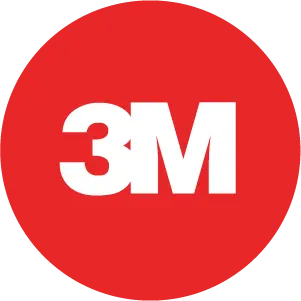
As a property manager, you likely recognize that your building’s energy efficiency is equally as important to you as it is to your tenants. While we focus globally on improving energy efficiency to help the environment, other important factors drive the desire to be energy efficient in our buildings. Investing in energy-efficient solutions can make your property more attractive to future occupants while also pleasing current tenants by lowering their operating costs and improving occupant comfort. With the benefits of energy efficiency in mind, how can you determine if your building operates as efficiently as possible?
Measures of Energy Efficiency
While there are many steps property managers can take to ensure their buildings are energy efficient, there are specific measurements and certifications that formally analyze and rate your space’s level of efficiency. Two of the most important measures of energy efficiency include LEED Certification and the ENERGY STAR score.
Measure Your Building’s Energy Efficiency: LEED Certification
LEED, or Leadership in Energy and Environmental Design, is a green building certification system developed by the U.S. Green Building Council that verifies that a building or community was designed with energy efficiency in mind. The end goal is to create healthy, cost-saving, and energy-efficient buildings. To measure the level of efficiency, LEED uses a point system of up to 110 points to score both residential and commercial buildings. With four certification levels, LEED Certified, Silver Certification, Gold Certification, and Platinum Certification, buildings can earn points by implementing sustainable strategies within their space, whether through metrics like energy savings, water efficiency, indoor environmental quality, and more.
Assess Your Building’s Performance: ENERGY STAR Score
ENERGY STAR is a joint program created by the United States Environmental Protection Agency and the U.S. Department of Energy. The goal is to help consumers and businesses save money while simultaneously benefiting the environment by incorporating energy-efficient products and practices in their buildings and businesses.
Your building’s ENERGY STAR score is a screening tool that allows you to assess your building’s performance in terms of energy efficiency, which is represented on a scale from 1-100. It considers the operations, assets, and purpose of use of your building to formulate this score. As a rule of thumb, an ENERGY STAR score of 75 and above is a high-performing building, meaning your space could be eligible for the coveted ENERGY STAR certification.
The Key to Boosting Energy Efficiency: 3M Window Film
With these energy efficiency measures in mind, many different products can be used within your space to advance your LEED Certification level and improve your ENERGY STAR score. Some common steps to take towards efficiency include installing LED lights, the consistent cleaning of air filters, and replacing old, underperforming HVAC systems. However, one comprehensive solution can improve your building in more ways than one while also adding points to your LEED and ENERGY STAR scores — 3M Window Film.
Window Film: Increase Energy Efficiency, Lower Energy Bills, Improve Comfort
The Department of Energy found that the average commercial building spends 40% of its energy costs on cooling, heating, and ventilation. With this in mind, windows are one of the most inefficient aspects of a building. When the sun blasts through the windows, it can cause uncomfortably warm temperatures. On the other hand, in the cool winter months, a poorly insulated window can allow manmade heat to escape, causing the indoors to feel unnecessarily cool. As a result, HVAC systems work hard to maintain the indoor temperature, using a significant amount of energy and driving up energy costs.
When 3M Window Film is applied to windows, it rejects heat in the summer and improves heat retention in the winter, leading to improved energy efficiency year-round. As a result, investing in window film can add points to your LEED Certification and improve your ENERGY STAR score, along with many other benefits. 3M Window Film offers impeccable heat rejection, UV protection, and glare reduction. These solar control enhancements improve interior temperatures and occupant comfort while adding years to the lifespan of HVAC systems.
How 3M Window Film Earns LEED Points
Installing 3M Window Film earns points toward a variety of LEED credits. For instance, buildings can earn 1 point towards the SS Credit 8 Light Pollution Reduction because 3M Window Film reduces the amount of artificial light that passes through a window while also minimizing the reflection of interior lights.
Additionally, 3M Window Film can earn a point toward the EQ Credit 7.1 Thermal Comfort. The intent of this credit is to provide a comfortable environment for occupants that supports productivity. 3M Window Film contributes to this initiative by minimizing solar heat gain through windows, which has been proven in case studies to lower temperatures in areas that receive direct sunlight.
3M Window Film can help buildings add points to various LEED credit categories, from optimized energy performance to UV rejection. Learn more about specific LEED credits HERE.
How 3M Window Film Improves Your ENERGY STAR Score
Rather than a summation of earned points like the LEED score, the ENERGY STAR score is a function of how efficiently a building operates compared to industry benchmarks. Based on several factors, such as the number of occupants, size, and location of your building, the ENERGY STAR algorithm calculates the amount of energy your building would use if operating less, the same as, or more efficiently than other buildings in the same category. Then, the algorithm compares your building’s actual energy usage to the projected benchmarks. The ratio of your building’s actual energy usage to the benchmark values determines the building’s ENERGY STAR score.
Consequently, 3M Window Film improves your building’s ENERGY STAR score by allowing it to operate more efficiently than the industry average. Window film’s solar heat rejection and insulating capabilities lower your building’s actual energy usage, improving the actual-to-benchmark energy usage ratio.
By maintaining a more consistent indoor temperature, window film can improve occupant comfort, tenant satisfaction, and energy efficiency. Investing in window film is a choice that will benefit property managers, occupants, and the environment for years to come.

Energy Products Distribution is a Master Distributor of 3M Window Films, 3M Paint Protection Films, 3M Wrap Film Series 2080, 3M Protection Wrap Films, 3M Architectural Finishes, 3M Ceramic Coatings, and Windshield Skin. We sell our products to professional installers throughout the US who provide turnkey installations (labor and material) to end-users in the automotive, commercial, government, and residential markets. Contact us to learn more about the benefits of these products.









